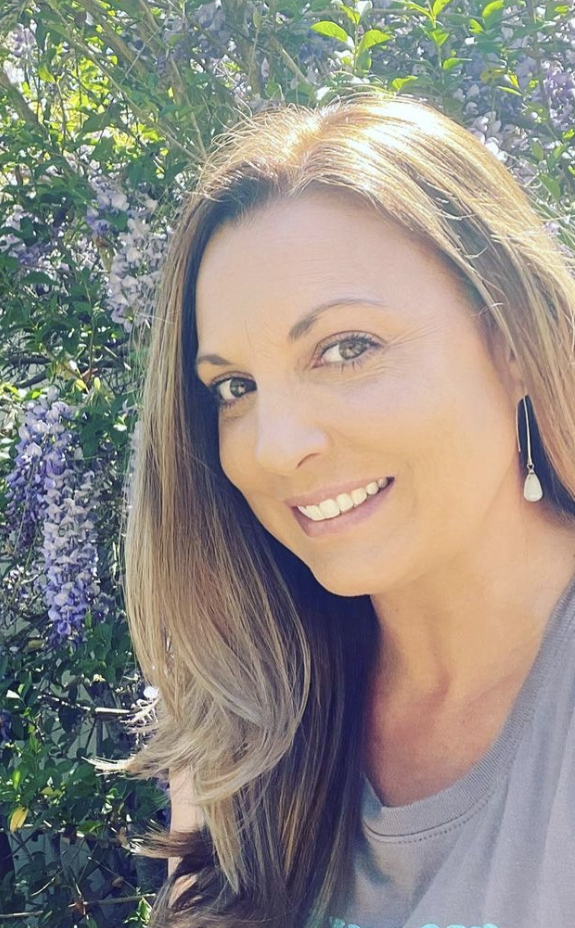I hear it all the time:
“I just say yes, even when my whole body wants to say no. It feels easier to go through the motions than to deal with conflict. But afterward, I feel empty—disconnected from him, and from myself.” This is obligation sex. It happens when intimacy comes not from desire, but from guilt, pressure, or fear.
“I just say yes, even when my whole body wants to say no. It feels easier to go through the motions than to deal with conflict. But afterward, I feel empty—disconnected from him, and from myself.” This is obligation sex. It happens when intimacy comes not from desire, but from guilt, pressure, or fear.
It might feel like the easier option in the moment. But over time, it erodes trust, drains passion, and leaves both partners unsatisfied. Obligation sex isn’t about how often you have it—it’s about the why. It happens when you agree to sex out of guilt or duty, when you override your body’s truth to avoid conflict, or when sex feels more like a task than a place of connection. On the surface, it might look like closeness. But underneath, it creates resentment, shame, and disconnection.
The cost of saying yes when you mean no is heavy. Resentment builds. Desire fades. Trust erodes, because your partner can feel when your yes isn’t real. And shame grows as you begin to wonder if something is wrong with you.
Passionate sex, on the other hand, isn’t about performance or constant fireworks—it’s about choice. When your yes is real, intimacy feels playful, nourishing, curious, and alive. It roots you in love and freedom, not fear or duty.
So why do so many couples slip into obligation? Cultural conditioning plays a big role, especially for women who were taught that saying no is selfish or unsafe. Add in mismatched desire, conflict avoidance, lack of emotional safety, or internalized shame, and it’s easy to fall into a cycle of obligation without even noticing. The real problem isn’t landing there—it’s staying stuck without realizing how much it costs.
Shifting from obligation to desire starts with small but powerful practices: honoring your no so there’s space for a true yes, redefining intimacy so it doesn’t always mean penetration or orgasm, creating emotional safety where boundaries are respected, talking openly about what lights you up and what shuts you down, and valuing quality over quantity. One wholehearted yes is worth more than ten half-hearted ones.
Your YES matters. Your NO matters. YOU matter.
There’s nothing wrong with you if you’ve been caught in obligation sex—you’re human. But the most erotic gift you can bring to your partner is your truth.
The next time you’re about to say yes, pause and ask:
👉 Is this a yes from my body and heart—or from guilt and fear?
A true yes is where intimacy, trust, and passion are born.
In Intimacy & Truth,
Tovah Petra

This past weekend, I stepped into something new... I was invited as a lead speaker at an event on Sex, Intimacy, and Neurodiversity. I had prepared, reflected, and carried my heart into the space. But when it was my turn to speak, something unexpected happened — I blanked out. My nervous system froze, and all the words I had hoped to share scattered like leaves in the wind. I saw grey.
In the moment, I felt embarrassed. The self-judgment came quickly... "I failed. I should have done better. Why couldn’t I just say what I planned?" But then, something deeper surfaced — the realization that what happened wasn’t failure at all. It was my nervous system doing exactly what nervous systems do when they perceive threat or overwhelm: moving into freeze to protect me. And isn’t that the very heart of what I teach? That our bodies are always speaking, always protecting, always guiding us back to safety?
The freeze response isn’t a mistake. It’s the body’s ancient way of pausing when things feel too much, too big, too fast. While my mind judged the blank-out as a failure, my body was showing me a live demonstration of the very nervous system wisdom I often share with clients and families. In a way, my body became my teacher in that moment.
Intimacy — whether with ourselves, our partners, or our communities — isn’t about polished perfection. It’s about showing up authentically. Sometimes that means words flow like poetry. Other times, it means we stumble, freeze, or fall silent. And still, connection is possible. In fact, intimacy deepens when we allow our full humanity to be seen — even the messy, uncomfortable parts.
What I wish I had said in that moment is this: Sex and intimacy aren’t just about pleasure or performance. They are about connection — to our bodies, our partners, our nervous systems, and our truth. And when we can honor the ways our bodies respond — whether through desire, vulnerability, or even freeze — we open new doorways to compassion and presence.
Instead of letting my embarrassment define me, I am choosing to let it empower me. This experience reminded me that courage doesn’t always look like delivering a perfect speech. Sometimes courage looks like showing up, freezing, and then staying present enough to keep going.
So if you’ve ever frozen, gone blank, or felt like you failed in a moment that mattered to you — know this... you are not a failure. You are human. Your nervous system is wise. And every time you show up, even imperfectly, you build resilience and deepen your capacity for connection.
My invitation — to myself and to you — is to embrace those moments when the body takes over. To meet ourselves with compassion instead of criticism. To remember that intimacy and connection are born not from flawless delivery, but from authentic presence.
Because in the end, it’s not about never freezing. It’s about learning how to thaw with grace, compassion, and connection.
With love and gratitude,
Tovah Petra
Tovah Petra

As the back-to-school season ramps up, many parents and caregivers feel the swirl of emotions that come with re-entry: excitement, nervousness, and a deep desire for our children to feel safe, seen, and successful in their own way.
For those raising neurodivergent children—kids whose brains process the world differently—this season often requires a slower rhythm and a more attuned lens. Rather than pushing our children to conform to the school system's pace, what if we walked alongside them, prioritizing body-based trust and nervous system safety as the foundation for learning and growth?
Honoring the Pace of the Child
Neurodivergent kids—whether autistic, ADHD, sensory sensitive, anxious, or otherwise wired differently—often live in a world that moves too fast. The return to school can feel jarring, especially after a summer of freedom and self-directed rhythm.
This is where we as caregivers can slow down and attune. Attunement means listening with our whole selves—sensing their nonverbal cues, feeling into their emotional world, and trusting that behavior is communication.
Walking at their pace might mean extra time in the morning, more support during goodbyes, or less packed afternoons. Honoring their pace isn’t falling behind—it’s an investment in long-term resilience. A body that feels safe is a body that can learn, relate, and regulate.
Creating Somatic Safety
In my Whole Family, Whole Child approach, we see the body as essential to healing—not just for kids, but for caregivers, too.
Somatic safety goes beyond physical safety. It’s the internal felt sense of "I belong. I’m safe to be me." For neurodivergent children, even “normal” school settings can register as overwhelming or unsafe.
What helps build somatic safety?
- Predictability and Structure: Visual schedules, practice runs, or gentle prep talks help their system orient.
- Co-regulation: Your calm presence—even when you're working hard to stay grounded—helps anchor them. A deep breath or hand on your heart can go a long way.
- Body-Based Tools: Support self-regulation through sensory kits, movement breaks, or playful language like, “Is your body in rocket mode or snail mode today?”
Safety opens the door for flexibility, connection, and growth—even in environments that aren’t a perfect fit.
The Power of the Attuned Parent
You don’t need to have all the answers. Your presence, curiosity, and connection are what matter most.
Maybe your child is clingy this year. Maybe they’re holding it together at school, then melting down at home. Or maybe they need a chewy necklace, noise-canceling headphones, or a quiet place to decompress. That’s not failure. It’s data.
Being an attuned parent means:
- Observing before reacting: What’s their body trying to say?
- Offering choices: “Want to jump 10 times or take a squish with your pillow?”
- Celebrating coping: “You listened to your body and took a break. That was so smart.”
And don’t forget—you matter, too. Your capacity, your regulation, and your softness are part of the picture.
You Are Not Alone
Raising a neurodivergent child often means going against the grain—advocating for accommodations, navigating misunderstandings, and educating others who don’t see your child’s brilliance.
But you’re not alone. You’re part of a growing movement of caregivers redefining success—not by gold stars, but by connection, regulation, and wholeness.
This back-to-school season, remember:
- It’s okay to go slow at their pace.
- Your child’s needs are not an inconvenience.
- Your intuition is powerful.
When we walk at the pace of our children and attune to their nervous systems, we lay the foundation for confidence, resilience, and self-trust. And isn’t that what real learning is all about?
Somatic Tips for a Smooth Back-to-School Transition
- Start the Day With Body Connection: Stretching, bouncing, or animal walks help your child feel grounded before leaving the house.
- Incorporate Breath Games: Blow feathers across the table, use pinwheels, or pretend to blow up a balloon with your hands to teach calm breathing playfully.
- Use Visual Emotional Check-ins: Make a simple chart with faces or colors. Ask, “Where are you right now?” to support emotional literacy.
- Offer Pressure or Deep Touch: Hugs, squeezes, or being rolled in a blanket like a “burrito” can help regulate and soothe overwhelmed systems.
- Practice After-School Reset Rituals: Let your child decompress before anything else—maybe with water play, swinging, or lying under a heavy blanket.
Tovah Petra, MA is a Somatic Practitioner and the creator of the Whole Family, Whole Child approach, where she helps parents of neurodivergent kids create emotionally safe, attuned, and connected homes—while also nurturing their own nervous systems, relationships, and intimate connection along the way.
Learn more at www.tovahpetra.com Magazine article featured in www.growingupinsantacruz.com August 2025.
We’ve been through hell and back.
As young parents.
As partners.
As two people who had no idea what we were really saying “yes” to all those years ago.
As partners.
As two people who had no idea what we were really saying “yes” to all those years ago.
Nearly 20 years together—and there were times we didn’t know if we’d make it.
We’ve stared down the face of divorce.
We’ve been inches from walking away from it all.
We’ve stared down the face of divorce.
We’ve been inches from walking away from it all.
But God.
God has an order.
And we — like many others — did things out of order.
We rushed.
We skipped steps.
We made decisions from pain, from programming, from survival.
And we paid for it—in resentment, distance, misunderstanding, and deep struggle.
We skipped steps.
We made decisions from pain, from programming, from survival.
And we paid for it—in resentment, distance, misunderstanding, and deep struggle.
Because the truth is: we each came into this relationship carrying our own inner wounds.
Our childhoods.
Our unmet needs.
Our unspoken fears.
Our silent expectations.
Our childhoods.
Our unmet needs.
Our unspoken fears.
Our silent expectations.
We brought with us the stories we were told (or not told) about love, gender roles, marriage, sex, family.
We absorbed messages from society that said we had to perform instead of feel, succeed instead of slow down, keep it all together, even when everything inside was falling apart.
We absorbed messages from society that said we had to perform instead of feel, succeed instead of slow down, keep it all together, even when everything inside was falling apart.
No one really taught us how to be in partnership.
How to repair ruptures.
How to hold space for each other’s pain while still honoring our own.
How to repair ruptures.
How to hold space for each other’s pain while still honoring our own.
We had to learn all of that the hard way.
But still — we fought.
Fought for us.
Fought for love.
Fought for our family.
Fought for love.
Fought for our family.
And today, I can say: I am so damn grateful we did. And continue to do.
Because here’s the truth no one tells you when you’re young and in love:
Marriage is not just romance and milestones.
Marriage is not just romance and milestones.
It’s a soul contract.
It’s late nights in silence after a fight.
It’s forgiving when it’s hard.
It’s choosing to stay even when your body wants to run.
It’s growing… sometimes in opposite directions for a while… and then finding your way back to one another.
It’s late nights in silence after a fight.
It’s forgiving when it’s hard.
It’s choosing to stay even when your body wants to run.
It’s growing… sometimes in opposite directions for a while… and then finding your way back to one another.
Marriage is sacred.
But it’s not always soft.
But it’s not always soft.
There are seasons of loneliness, even when you’re lying in the same bed.
There are days when you don’t recognize the person you married—or the person you’ve become.
There are decisions made in survival mode that ripple into years of repair.
There are days when you don’t recognize the person you married—or the person you’ve become.
There are decisions made in survival mode that ripple into years of repair.
And yet — when both people are willing to show up, look in the mirror, and try again—there can be something so unbreakably beautiful on the other side.
We’re not perfect.
We still bicker.
We still push each other’s buttons.
But underneath all of it — we are each other’s home.
We still bicker.
We still push each other’s buttons.
But underneath all of it — we are each other’s home.
Marriage is not about avoiding the mess.
It’s about loving each other through the mess.
It’s about loving each other through the mess.
It’s about unlearning everything that never served us—
and remembering who we really are.
and remembering who we really are.
It’s about learning to do things in order even if you didn’t get the order right at the start.
If you’re in the thick of it right now… if you're wondering if you’re going to make it, I want to tell you this:
It’s okay to start over — with the same person.
It’s okay to admit you’ve both changed.
It’s okay to learn how to love each other again, differently.
It’s okay to admit you’ve both changed.
It’s okay to learn how to love each other again, differently.
But both people have to fight.
Not against each other—but for each other.
Not against each other—but for each other.
And when you do?
What’s on the other side is not just peace—it’s power.
A bond built through fire.
A friendship rooted in truth.
A friendship rooted in truth.
A home with strong bones.
A love that has been tested—and still stands.
A love that has been tested—and still stands.
So here’s to the ones still in the ring.
To the ones showing up to therapy, to hard conversations, to the vulnerability it takes to heal.
To the ones showing up to therapy, to hard conversations, to the vulnerability it takes to heal.
You’re not failing—you’re becoming.
I love you, Jonny.
Thank you for choosing this fight with me.
I wouldn’t want to do it with anyone else.
Thank you for choosing this fight with me.
I wouldn’t want to do it with anyone else.





